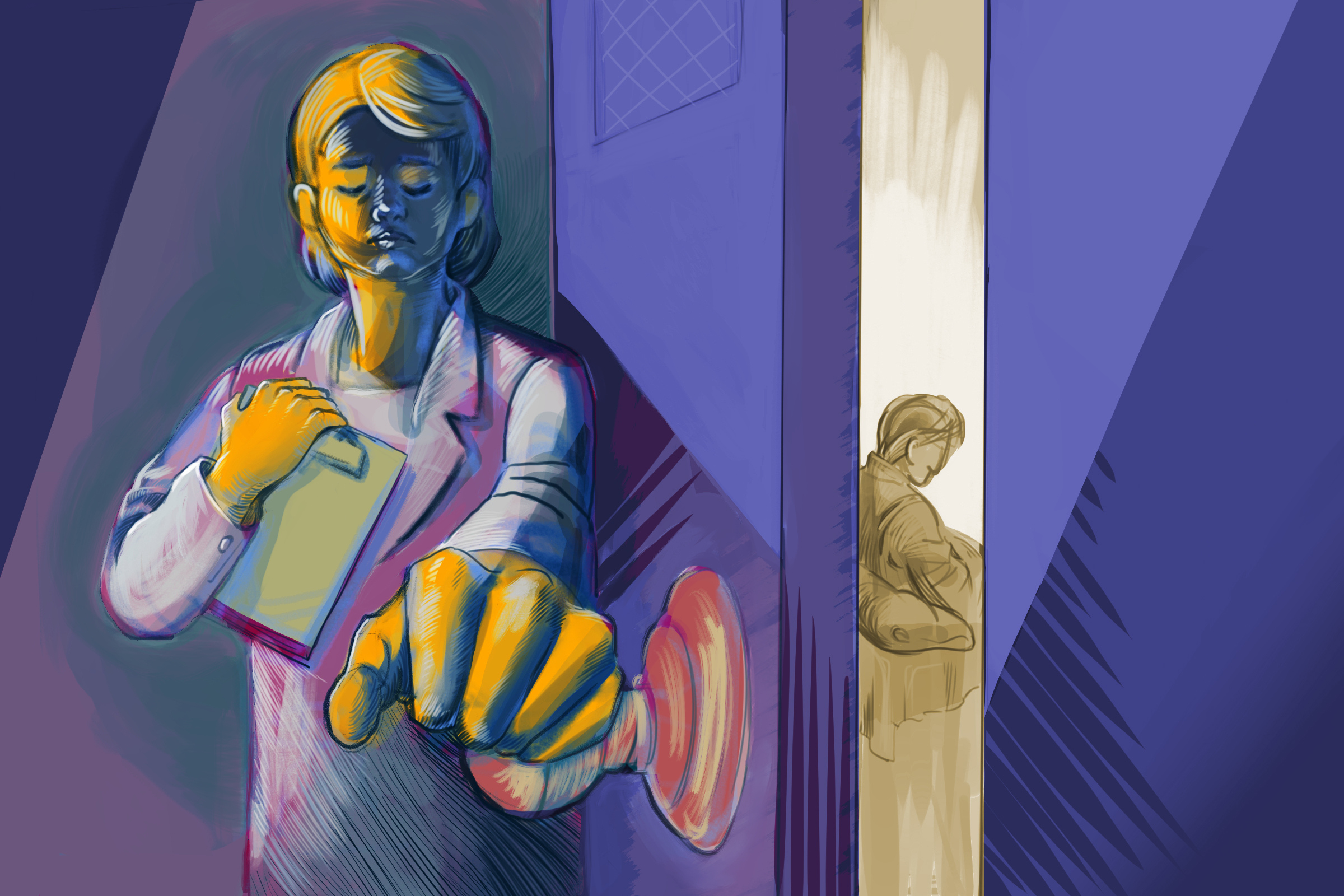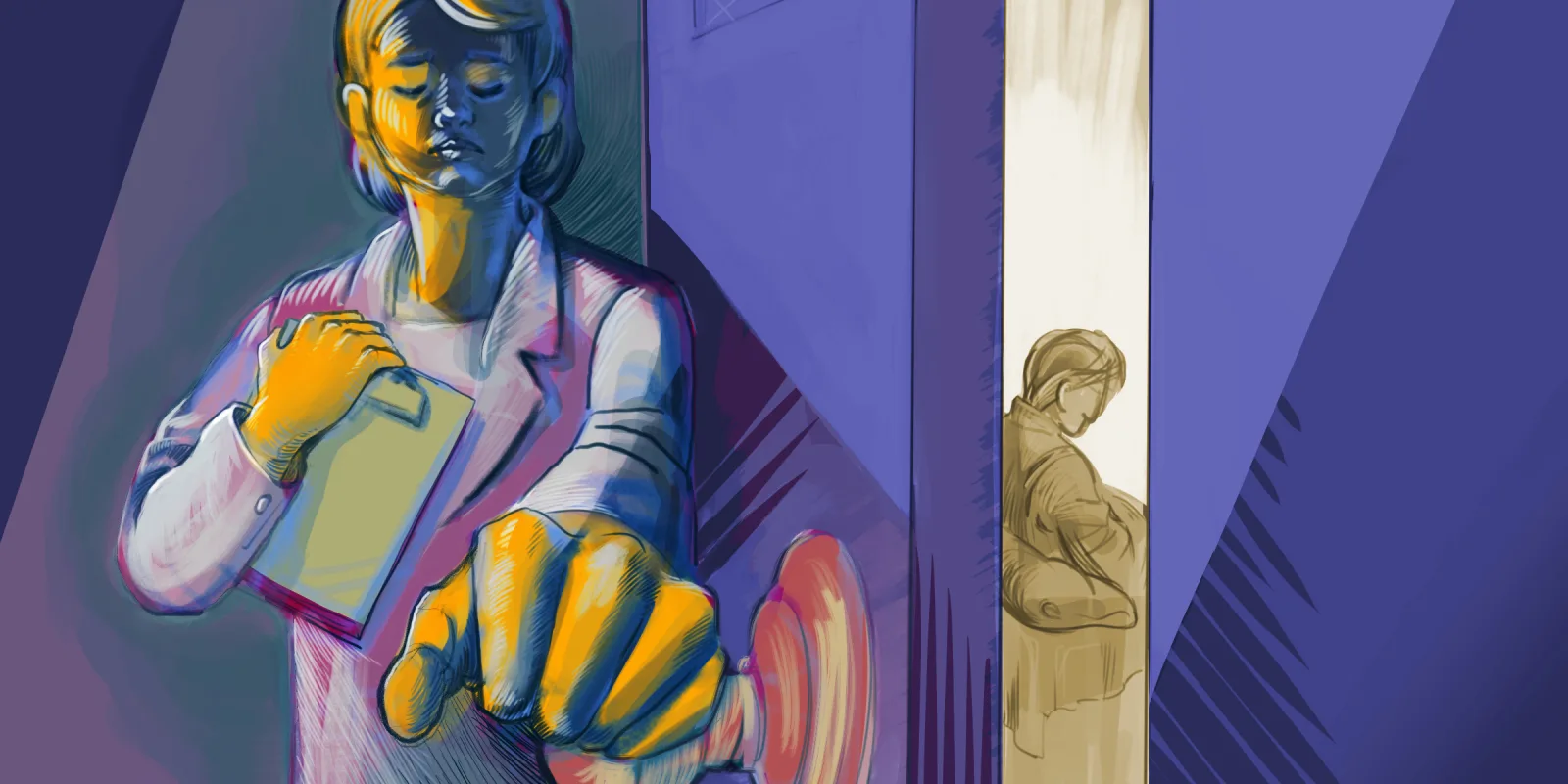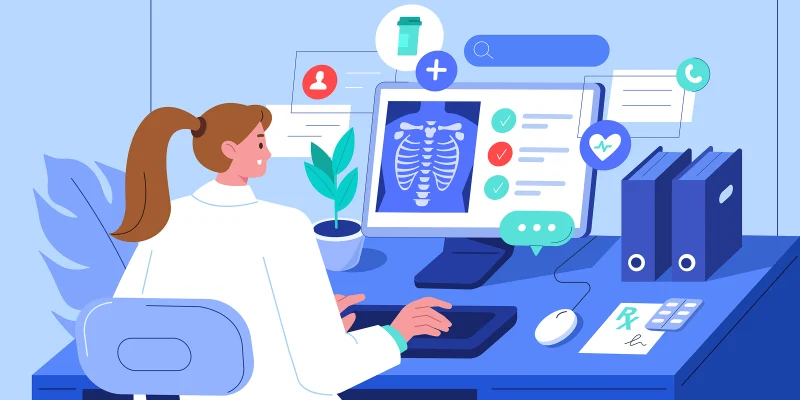 The patient took his seat across the room from me. I observed his appearance as part of my mental status exam: painted black nails, now dull and chipped around the edges, faded black jeans ripped at the knees, coils of brown hair that stood up from his head. I introduced myself – a familiar script – and asked the patient what brought him to our inpatient psychiatric hospital. I used an earnest tone.
The patient took his seat across the room from me. I observed his appearance as part of my mental status exam: painted black nails, now dull and chipped around the edges, faded black jeans ripped at the knees, coils of brown hair that stood up from his head. I introduced myself – a familiar script – and asked the patient what brought him to our inpatient psychiatric hospital. I used an earnest tone.
He looked down at his nails and said frankly, “Well, I tried to kill myself.”
I waited, giving him time to elaborate. He looked back at me, tilted his head, and smiled. Reflexively, I smiled back, hoping it would indicate a warm invitation to continue. After a few more seconds of silence, I finally asked, “What happened?”
He began telling me about the events of the day leading up to his suicide attempt, and the underlying stressors that had exacerbated his mood disorder. From his psychiatric history, I gathered that he met the criteria for cluster B traits of narcissistic personality disorder and borderline personality disorder. At the end of the encounter, when discussing his assessment and treatment plan, he interrupted me mid-sentence and said, “Okay, I get it, Monique.”
He used my first name, though I had introduced myself as “Doctor.” I was taken aback. How can he be so flippant about this? I thought it indicated that he had a flagrant disregard for his mental health, and for me, his provider. I kept calm, not succumbing to the initial shock, and quickly brought myself back to the present moment. I understood that this was not personal, but an outward display of his cluster B traits. Still, as I continued the encounter, I remembered that I would be following up with him tomorrow, and I was filled with a sense of dread — my countertransference.
Countertransference occurs when the clinician’s biases and emotional reactions to a patient result in unconscious interference with the clinician’s ability to understand the patient. The concept was first introduced by Sigmund Freud in the context of psychoanalysis and he believed countertransference was problematic for the therapeutic alliance between the therapist and the patient. It was something Freud felt therapists needed to be “warned” about so that they could “recognize and master” it.
Now, the term has entered colloquial medical vocabulary to describe physician-patient relationships, often with a negative connotation. In my patient encounter, I experienced negative countertransference because I perceived the patient as being difficult, and anticipated resistance to treatment. The potential harm inherent in my biases was that it might affect the quality of care that I provided to the patient.
Encountering negative countertransference is unavoidable for clinicians. Our emotional reactivity to certain patterns of behavior, characteristics, or patients’ appearances derives from our own learned experiences. It is advisable to explore these reactions, as uncomfortable as they may be. Avoiding or denying unresolved countertransference can manifest as resentment, lack of empathy, and may even lead to physician burnout.
One method for managing countertransference that has helped me personally is to share my experience with fellow team members. Doing so is helpful in elucidating if the emotional reaction is a shared reaction and, therefore, related to the patient (versus related to the clinician’s own unresolved conflicts). And if the reaction is related to the patient, it can contribute to the patient’s assessment. Indeed, countertransference can be used as a clinical tool to provide some of the first clues in diagnosing psychiatric patients.
My reaction to the patient, for example, gave me supporting evidence of his diagnosis (of cluster B personality traits). Furthermore, discussing countertransference within an interdisciplinary team can lead to identifying the patient’s needs and best management. In my patient’s case, it enabled our care team to recommend dialectical behavioral therapy for emotional regulation, distress tolerance, and interpersonal effectiveness.
As clinicians, it is our duty to “do no harm” and provide equitable care, when we can. It can be easy to succumb to negative countertransference — it is often the path of least resistance, acting in our best interest instead of the patient’s. But our role as health care providers puts us in a privileged position. Patients depend on us. If I had reacted with contempt at that moment with my patient, I would have lost any potential to build rapport with him, making future encounters with him more difficult. Instead, I chose to set my countertransference aside and talk to my patient with patience and respect.
Countertransference is unavoidable, but recognizing and managing it improves interactions with our patients, leading to better patient outcomes and better physician wellness.
Monique Mun, MD is a PGY-2 psychiatry resident at Henry Ford Hospital in Detroit, Michigan. Her clinical interests are in child and adolescent psychiatry, and cultural psychiatry. Dr. Mun has no financial disclosures or conflicts of interest.
Illustration by April Brust







